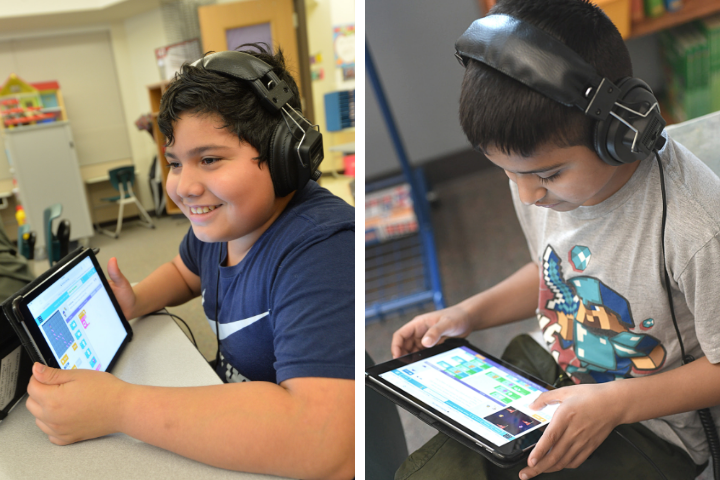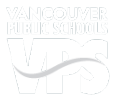
Students use tech to gain skills for life
Every head in special education teacher Meagen Winzer’s classroom tipped forward as students worked on their iPads to learn computer coding. The third-, fourth- and fifth-graders completed game-like activities that teach fundamentals of computer coding on the nonprofit Code.org website.
It’s the beginning of a skill with broad real-world applications. Stream a video, for example, or drive a newer car and you’ve benefited from people who know how to code.
The Vancouver community has told Vancouver Public Schools that students should be well-prepared for the technical demands of future careers. In 2013, the community approved a technology levy to support this goal. Part of the district’s work to meet the expectation has been introducing coding activities in several schools.
In 2017, special education classrooms got the opportunity to participate too. Bringing coding to elementary special education classrooms was the brainchild of Meagan Williams, a Vancouver special education teacher and special education instructional technology facilitator who supports schools in their use of iPads and digital tools.
Williams secured a total of more than $25,000 in grant funding from the Foundation for Vancouver Public Schools and the Office of Superintendent of Public Instruction over the last two years to cover the cost of teacher training and materials.
This year students in nine special education classrooms at seven elementary schools, including Salmon Creek Elementary, are discovering the joys and challenges of coding. In just over two months, they had written approximately 29,000 lines of code.
“I think technology’s a strength for our students,” said Winzer, whose Salmon Creek Elementary classroom provides enhanced support in reaching grade-level academic expectations.
The coding curriculum, with its ties to language arts, math and science standards, boosts academic knowledge, focus and critical thinking skills. “It’s pretty fun and cool,” said Jacob, a fourth-grader.
And while coding skills may directly benefit some students well beyond elementary school, the goal of the program isn’t necessarily to develop the next generation of computer coders. It’s a new way of asking students to flex their social and soft skills as they do independent and collaborative work.
“Many of the activities focus on perseverance, which I think is really important,” Winzer said. “Sometimes our kids get in a routine, thinking if that’s going to be too hard I’m not going to try it. And so just seeing other people have difficulty or struggle and then move forward is helpful for them.
“Working together through some of the challenges encountered during coding has helped with their confidence,” Winzer added.
Williams sees coding as a natural way to expand the school district’s focus on what’s called social-emotional learning—helping students develop traits such as self- and social awareness, decision-making and interpersonal skills. “Our special education teachers are some of the greatest social-emotional learning experts we have, and this program is supplemental to the incredible work they are already doing,” she said.
If voters reauthorize the technology levy in February 2019, the program could expand to middle and high school special education classrooms.
“Coding is my favorite part of school,” said Salmon Creek fifth-grader Emily Schroeder. She said it makes her feel proud and could help her in the future.
What does she want to do when she grows up?
She smiled. “Teacher.”
